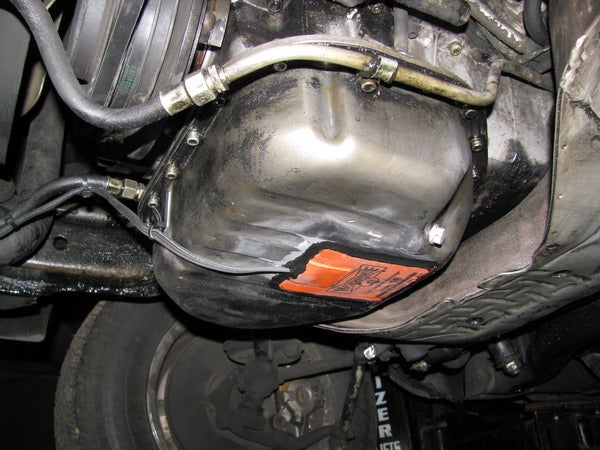 "Andy Sheehan, StreetsideStig" (AndySheehan-StreetsideStig)
"Andy Sheehan, StreetsideStig" (AndySheehan-StreetsideStig)
10/21/2013 at 11:29 • Filed to: None
 1
1
 4
4
 "Andy Sheehan, StreetsideStig" (AndySheehan-StreetsideStig)
"Andy Sheehan, StreetsideStig" (AndySheehan-StreetsideStig)
10/21/2013 at 11:29 • Filed to: None |  1 1
|  4 4 |

I read once about an early car that required its operator to drain the oil and heat it up in a pan every time he wanted to drive it in the winter. This may have been several cars. I'm not sure. I'm not even sure where I read it. Anybody have a line on that?
 Demon-Xanth knows how to operate a street.
> Andy Sheehan, StreetsideStig
Demon-Xanth knows how to operate a street.
> Andy Sheehan, StreetsideStig
10/21/2013 at 11:32 |
|
I believe that may have been the antarctic beetle. But a lot of vehicles in the north never get shut down because diesel fuel gels and the oil becomes very thick, which makes restarting extremely difficult.
 Laird Andrew Neby Bradleigh
> Andy Sheehan, StreetsideStig
Laird Andrew Neby Bradleigh
> Andy Sheehan, StreetsideStig
10/21/2013 at 11:37 |
|
Pre 1950(ish) it was quite common to, among other things, drain the oil and bring it inside over night in cold climates. It was also common to pour boiling water on the enginge and put hot coals around it. (The Block heater got patented in '49 I think.) Could this be what you're thinking of?
 RamblinRover Luxury-Yacht
> Andy Sheehan, StreetsideStig
RamblinRover Luxury-Yacht
> Andy Sheehan, StreetsideStig
10/21/2013 at 11:42 |
|

Could have been practically any car, but an early car with hot-tube or other non-spark ignition might be a particularly good candidate. In this picture is an oil-pan heater on an OM617 Benz engine, so heating engine oil is still something very much with us.
 Laird Andrew Neby Bradleigh
> Demon-Xanth knows how to operate a street.
Laird Andrew Neby Bradleigh
> Demon-Xanth knows how to operate a street.
10/21/2013 at 11:45 |
|
When I drove a truck delivering fish here in Norway it was not uncommon that the temperature dropped below -30 celsius (-22 Fahrenheit) in the winter, whenever that happened we just kept the engines running. The problem was not so much that the engines would'nt fire up, it was more that we'd burn out the lead to the starter before the engine would start :P When it dropped below -40 celsius (-40 fahrenheit) I could not do my route if I was assigned the Mercedes Sprinter, the fluid in the autobox could not cope with those temps :P